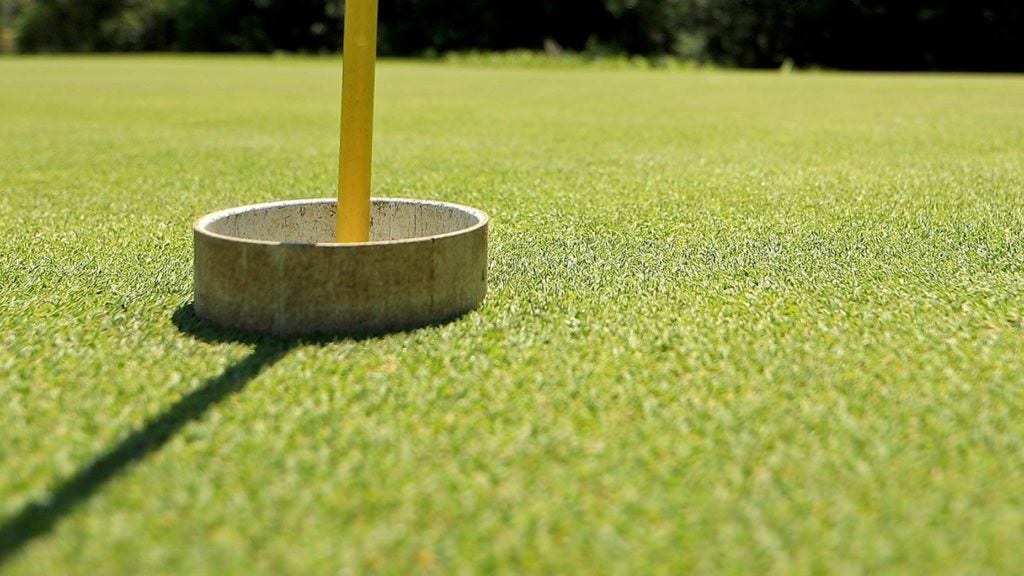Tour pros sometimes say it when they’re on a putting hot streak: the hole looks as large as a manhole cover. Nowadays, the rest of us can almost relate.
In the Covid era, with many courses switching to raised cup liners, the target suddenly appears much larger. Which makes putting seem a whole lot simpler. Too bad keeping score has gotten more complex. It’s become a judgment call. Because the ball no longer falls into the hole, it’s up to golfers to decide whether the shot woulda, shoulda dropped.
The United States Golf Association calls this your “most likely score,” which, in the case of raised cups, it applies this way: a ball should be considered “holed” if the player who struck the shot determines that “the ball would have been holed more than 50 percent of the time had the hole liner not been raised.”
Sounds reasonable enough.
But even with that guidance, scoring remains a matter of opinion. You think your shot should count. But maybe your opponent doesn’t. This could get ugly. Or at least give rise to controversy and confrontations.
What to do? The Etiquetteist sees three potential paths to peace and understanding.
1. Anything That Touches Is Good
Like a happy marriage, a happy round of golf is built on basic ground rules and clear communication. Before you begin, make an agreement with your partners that any shot that touches a raised cup is good. And when we say any shot, we mean any shot, whether it’s a putt that hits dead center at perfect pace, or a bladed chip that slams against the cup liner and caroms off the green. Traditionalists might cringe, and they’d be right to say that this increases the likelihood of luck triumphing over skill. But it also keeps things simple by eliminating any chance of argument. No opinions. Only facts. Did the ball touch the cup liner? Ok. Good. Now, count up your shots and carry on.
2. Majority Rules
Under the USGA’s “most likely score” guidelines, the player who struck the shot has the final say. He or she gets to decide what score will count toward their handicap. But a handicap is one thing. A money match with your buddies is another. As long as you’re not playing in a tournament and don’t need to protect the field, the Etiquetteist sees no reason why you and your partners can’t decide before the round to settle all questions democratically. If the cup liner hadn’t been raised, would the ball have dropped into the hole? Or would it have lipped out? Put it to a vote within your group. Majority rules. If the vote ends in a tie, flip a coin. Yes, that’s arbitrary. And you might end up feeling that you got robbed. But agreements are agreements. And besides, big deal. How much money are you playing for anyway?
3. The Honor System
The governing bodes are trusting people. With the latitude they grant in their “most likely score” guidelines, they are basically saying: we’re counting on you to do the right thing. In everyday life, doing the right thing can be difficult. On the golf course, it should be easy, especially when it comes to deciding whether your ball would have dropped in the cup. “On some level, every golfer knows if a putt would have gone in or been off-speed or stayed out,” says GOLF Magazine Top 100 Teacher Jon Tattersall. Be honest with yourself. Was your ball really on a good line and moving at a reasonable pace? Can you sincerely say that it would have dropped? Deep down, you know the answer. Everyone watching will know it, too. A dishonest answer may come with short-term gain, but it isn’t worth the long-term downsides. Try to deceive your partners, and they’ll be deeply disappointed. But, as Tattersall points out, “the only person you’re cheating is yourself.”
